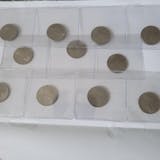elemintalshop
Emperor Haile Selassie & Lion of Judah 25 Matonas Ethiopia Authentic Coin Money for Jewelry and Craft Making (1931) (Rastafarian)
Emperor Haile Selassie & Lion of Judah 25 Matonas Ethiopia Authentic Coin Money for Jewelry and Craft Making (1931) (Rastafarian)
Couldn't load pickup availability
Emperor Haile Selassie & Lion of Judah 25 Matonas Ethiopia Authentic Coin Charm for Jewelry and Craft Making (1931) Rastafarian
Obverse: Crowned head of Emperor Haile Selassie right
Ruler:Emperor Haile Selassie I (1892-1975)
Script: Ge'ez
Reverse: Lion of Judah: Crowned lion right, right foreleg raised holding ribboned cross
Scripts: Ge'ez, Latin
Lettering: 25
Features
Issuer Ethiopia
Emperor Haile Selassie I (1930-1936, 1941-1974)
Type Standard circulation coin
Year 1923 (1931)
Calendar Ethiopian
Value 25 Matonya (0.25)
Currency Birr (decimalized, 1931-1936)
Composition Nickel
Weight 4.97 g
Diameter 21.58 mm
Shape Round
Orientation Medal alignment ↑↑
Demonetized Yes
Number N# 4392
References KM# 30, Schön# 26
Wikipedia:
Haile Selassie I (Ge'ez: ቀዳማዊ ኀይለ ሥላሴ, romanized: Qädamawi Häylä Səllasé, Amharic pronunciation: [ˈhaɪlə sɨlˈlase] born Ras Tafari Makonnen; 23 July 1892 – 27 August 1975) was the Emperor of Ethiopia from 1930 to 1974. Prior to his coronation, he had been the Regent Plenipotentiary of Ethiopia from 1916. He is a defining figure in modern Ethiopian history. He was a member of the Solomonic dynasty who traced his lineage to Emperor Menelik I.
Selassie attempted to modernize the country through a series of political and social reforms, including the introduction of Ethiopia's first written constitution and the abolition of slavery. He led the failed efforts to defend Ethiopia during the Second Italo-Ethiopian War and spent the period of Italian occupation in exile in England. He returned to lead Ethiopia in 1941 after the British Empire defeated the Italian occupiers in the East African campaign. He dissolved the Federation of Ethiopia and Eritrea, which was established by the UN General Assembly in 1950, and integrated Eritrea as a province of Ethiopia while fighting to prevent their secession.
His internationalist views led to Ethiopia becoming a charter member of the United Nations. In 1963, he presided over the formation of the Organisation of African Unity, the precursor of the African Union, and served as its first chairman. He was overthrown in a 1974 military coup by a Marxist-Leninist junta, the Derg. Selassie was murdered by the junta on 27 August 1975.
Among some members of the Rastafari movement, Haile Selassie is referred to as the returned messiah of the Bible, God incarnate. This distinction notwithstanding, Haile Selassie was a Christian and adhered to the tenets and liturgy of the Ethiopian Orthodox church. The Rastafari movement was founded in Jamaica in the 1930s and its followers are estimated at between 700,000 and one million.
He has been criticized by some historians for his suppression of rebellions among the landed aristocracy (the mesafint), which consistently opposed his reforms; some critics have also criticized Ethiopia's failure to modernize rapidly enough. During his rule the Harari people were persecuted and many left the Harari Region. His regime was also criticized by human rights groups, such as Human Rights Watch, as autocratic and illiberal. Although some sources state that under the Haile Selassie regime the Oromo language was legally banned from education, public speaking and use in administration there was never any Imperial Ethiopian law on record that legally banned certain languages; Article fourteen of His Majesty's 1944 Regulations for Establishment of Missions specifically allowed for the use of local languages for instance. The Amhara culture dominated throughout the eras of military and monarchic rule. Both the Haile Selassie and the Derg government relocated numerous Amharas into southern Ethiopia where they served in government administration, courts, church and even in school, where Oromo texts were eliminated and replaced by Amharic. Once literacy rates increased in Ethiopia the Emperor included constitutional recognition of every minority language in Article four of the 1974 Draft Constitution which the Derg outright rejected. Following the death of Hachalu Hundessa in June 2020, the Statue of Haile Selassie in Wimbledon Park, London was destroyed by Oromo protesters, and his father's equestrian monument in Harar was removed.
********
Wikipedia:
The Lion of Judah (Hebrew: אריה יהודה Aryeh Yehudah) is a Jewish national and cultural symbol, traditionally regarded as the symbol of the Israelite tribe of Judah. According to the Torah, the tribe consists of the descendants of Judah, the fourth son of Jacob. The association between Judah and the lion can first be found in the blessing given by Jacob to his son Judah in the Book of Genesis.
The Lion of Judah is also mentioned in the Book of Revelation, as a term representing Jesus, according to Christian theology. The lion of Judah was also one of the titles of the Solomonic Emperors of Ethiopia.
History
The biblical Judah (in Hebrew: Yehuda) is the eponymous ancestor of the Tribe of Judah, which is traditionally symbolized by a lion. In Genesis, the patriarch Jacob ("Israel") gave that symbol to this tribe when he refers to his son Judah as a Gur Aryeh גּוּר אַרְיֵה יְהוּדָה, "Young Lion" (Genesis 49:9) when blessing him.[3] In Jewish naming tradition the Hebrew name and the substitute name are often combined as a pair, as in this case. The Lion of Judah was used as a Jewish symbol for many years, and as Jerusalem was the capital of the Kingdom of Judah, in 1950 it was included in the Emblem of Jerusalem.
It was depicted on a map of the Upper Nile published in 1683 by the Italian Jobi Ludolfi describing the Lion of Judah symbol as the Royal Insignia of the Ethiopian empire. The Solomonic dynasty of Ethiopia claims to have its patrilineal origin in the Israelite Royal House of Judah. The Lion of Judah served as the hereditary title of the Solomonic Ethiopian emperors including Yohannes IV, Menelik and Haile Selassie and was depicted on the flag of Ethiopia from 1897 to 1974. Due to its association with Haile Selassie, it continues to be an important symbol among members of the Rastafari movement.
Ethiopian history
Ethiopia's history as recorded and elaborated in a 13th-century treatise, the Kebre Negest, asserts descent from a retinue of Israelites who returned with Makeda, the Queen of Sheba from her visit to King Solomon in Jerusalem, by whom she had conceived the Solomonic dynasty's founder Menelik I. As Solomon was of the tribe of Judah, his son Menelik I would continue the line, which according to Ethiopian history was passed directly down from king to king until Emperor Haile Selassie I (ostensibly the 225th king from King David) was deposed in 1974.
Both Christian and Jewish Ethiopian history have it that there were also immigrants of the Tribes of Dan and Judah that accompanied Makeda back from her visit to Solomon; hence the Ge'ez motto Mo`a 'Anbessa Ze'imnegede Yihuda ("The Lion of Judah has conquered"), included among the titles of the Emperor throughout the Solomonic Dynasty.
The Lion of Judah motif figured prominently on the old imperial flag, currency, stamps, etc. and may still be seen gracing the terrace of the capital as a national symbol. After the collapse of the Derg in 1990, a minor political party bearing the name Mo'a Anbessa made its appearance.
Rastafari movement
The Lion of Judah is a prominent symbol in the Rastafari movement. It represents Emperor Haile Selassie I as well as being a symbol of strength, kingship, pride and African sovereignty. Rastafari consider the mention of "The Lion of Judah" in Genesis 49:9 and Revelation 5:5 of The Bible to refer to Emperor Haile Selassie I. Rastafari hail Haile Selassie I with the titles "KING of Kings, LORD of lords, Conquering Lion of Judah, Elect of God, the Light of the World".
Christianity
The phrase appears in the New Testament in Revelation 5:5: "And one of the elders saith unto me, Weep not: behold, the Lion of the tribe of Judah, the Root of David, hath prevailed to open the book, and to loose the seven seals thereof." This is widely regarded as a reference to the Second Coming among Christians.
Many Christian organizations and ministries use the lion of Judah as their emblem or even as their names.
In literature
Inspired by the Lion of Judah, C. S. Lewis used a lion named Aslan to represent Jesus in The Chronicles of Narnia.
Share

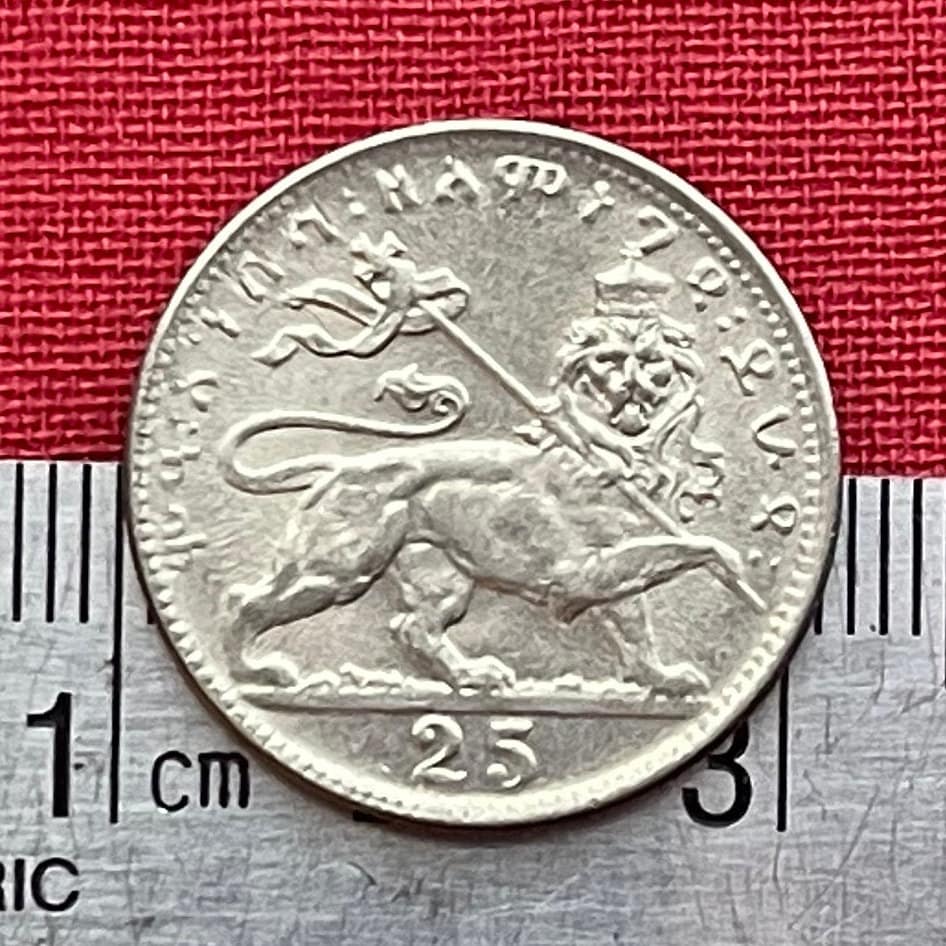
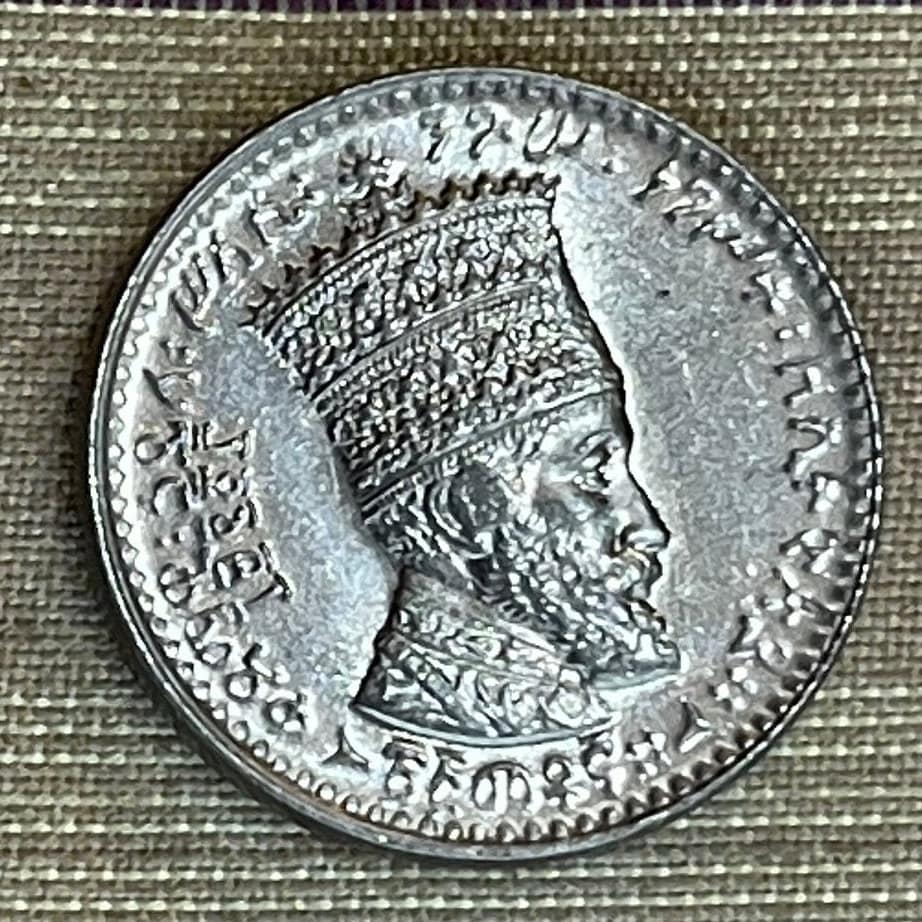
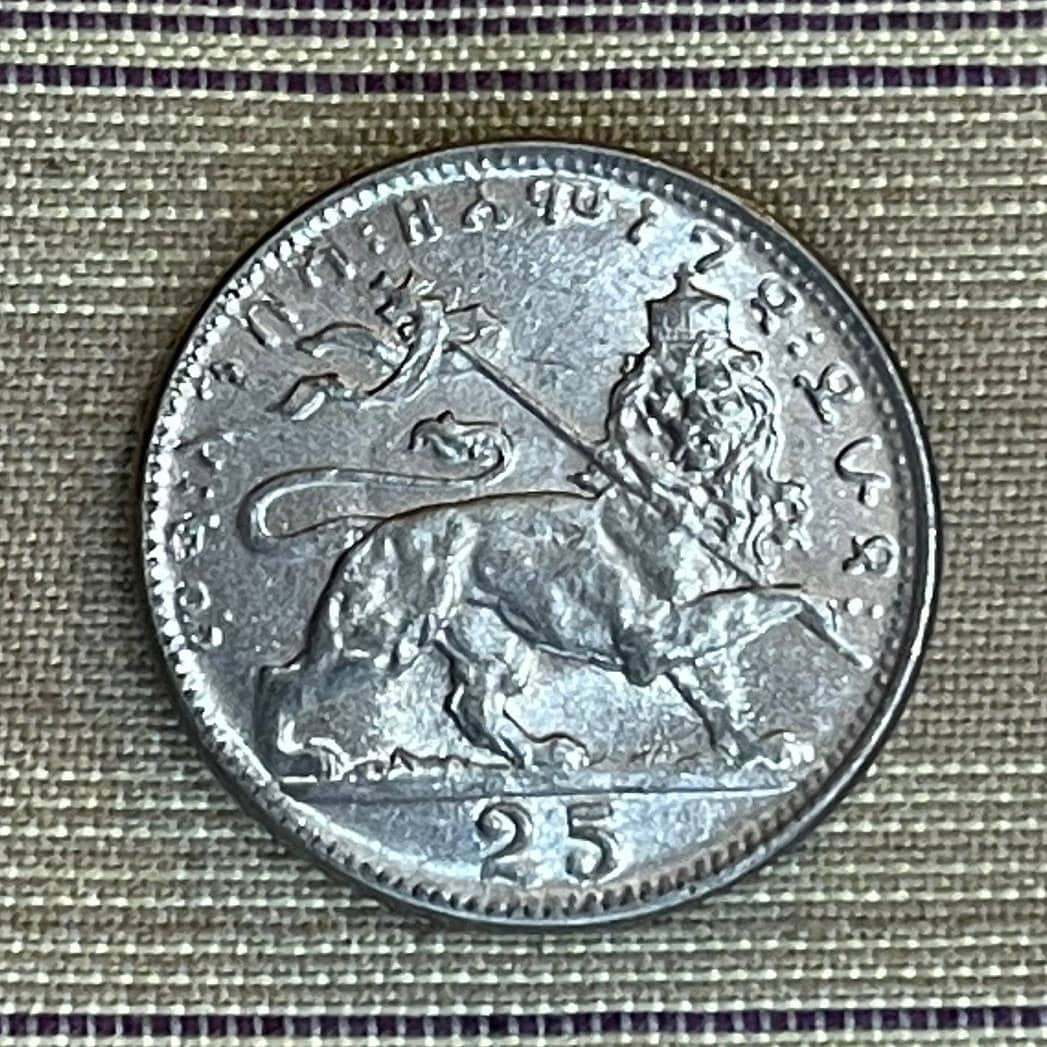
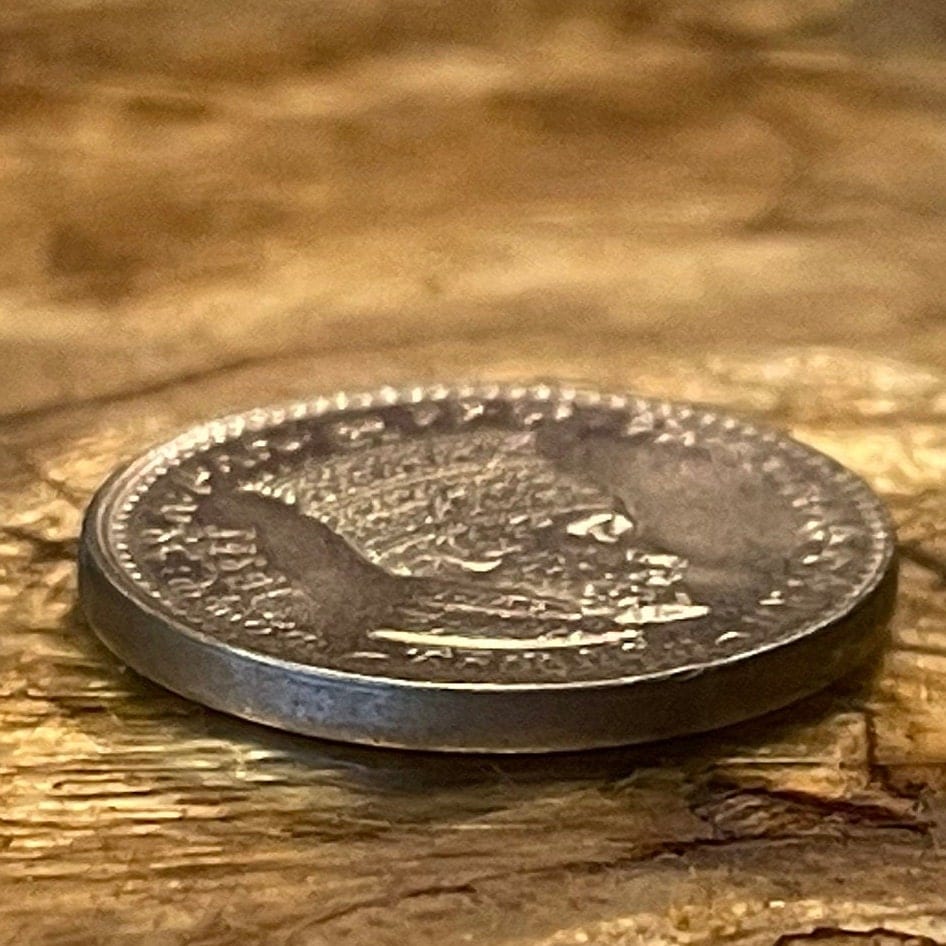
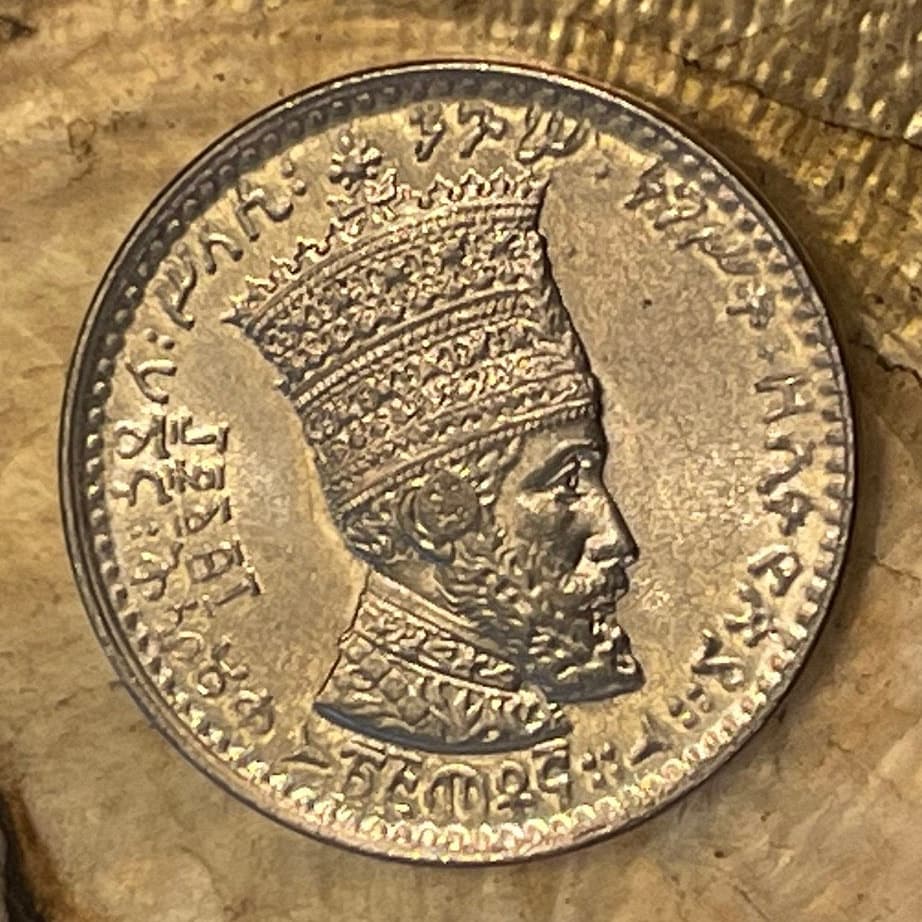
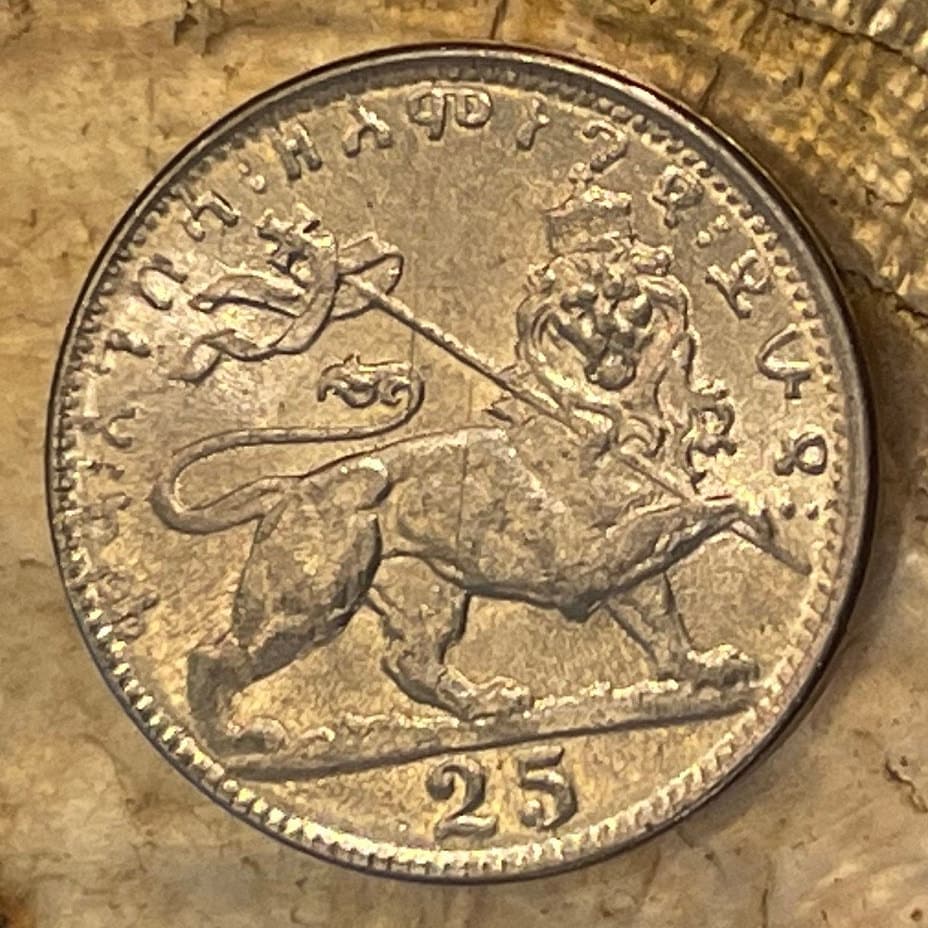
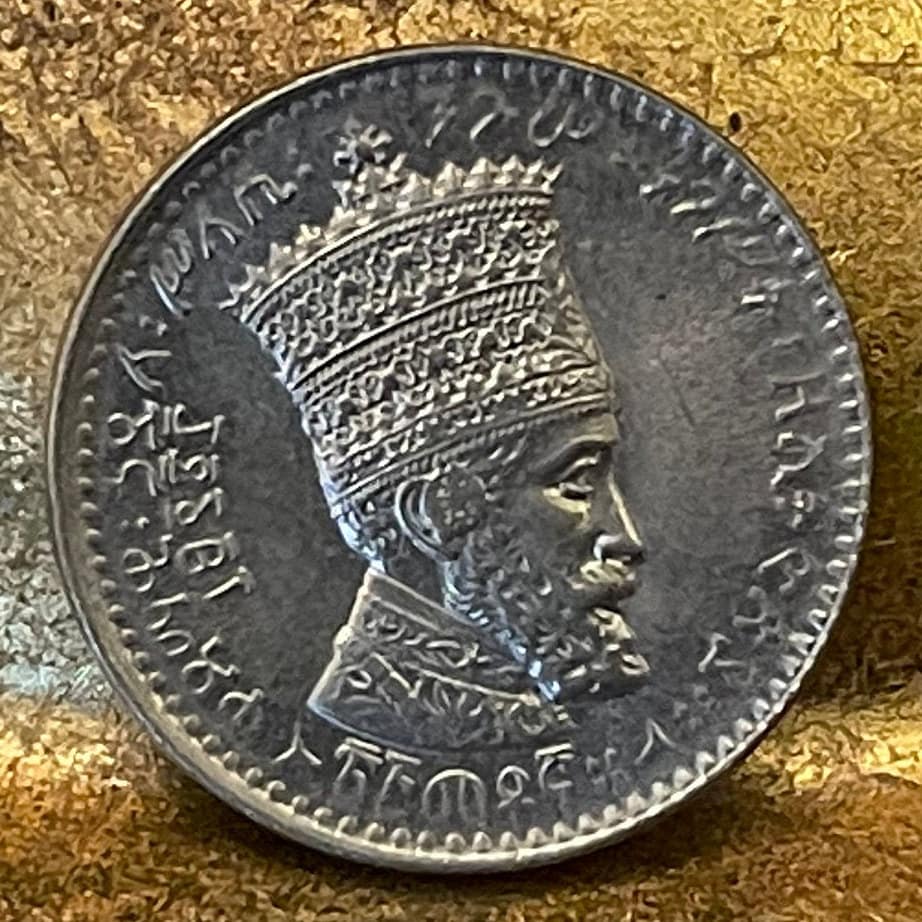
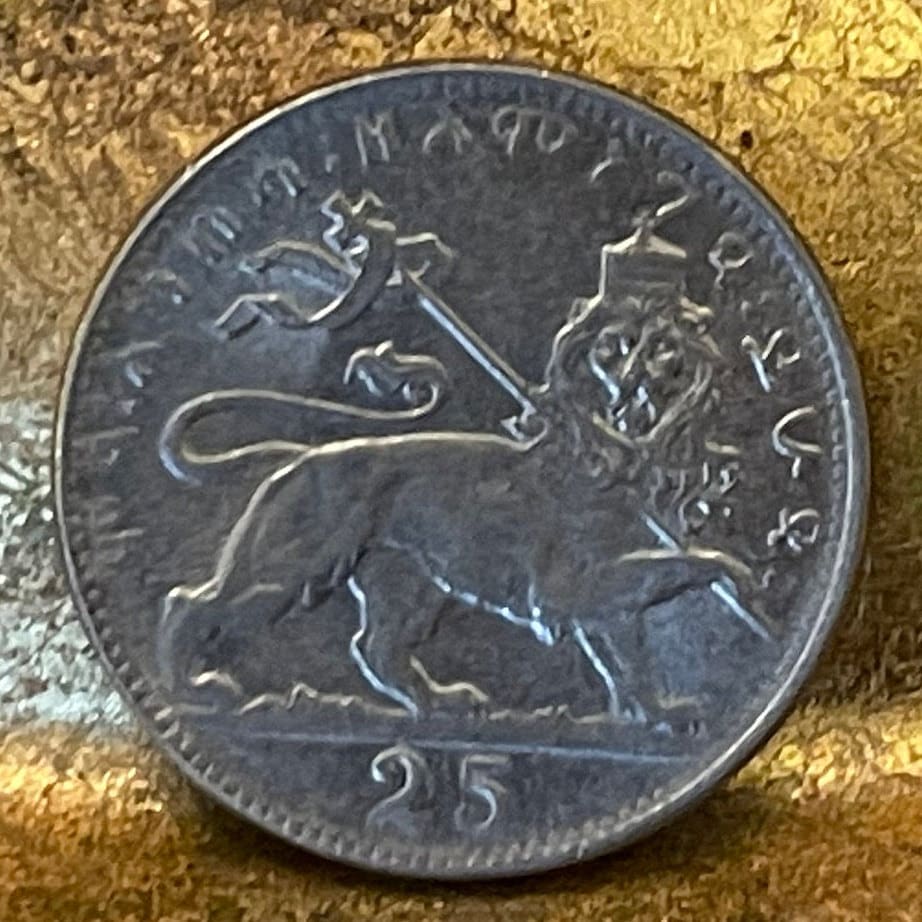
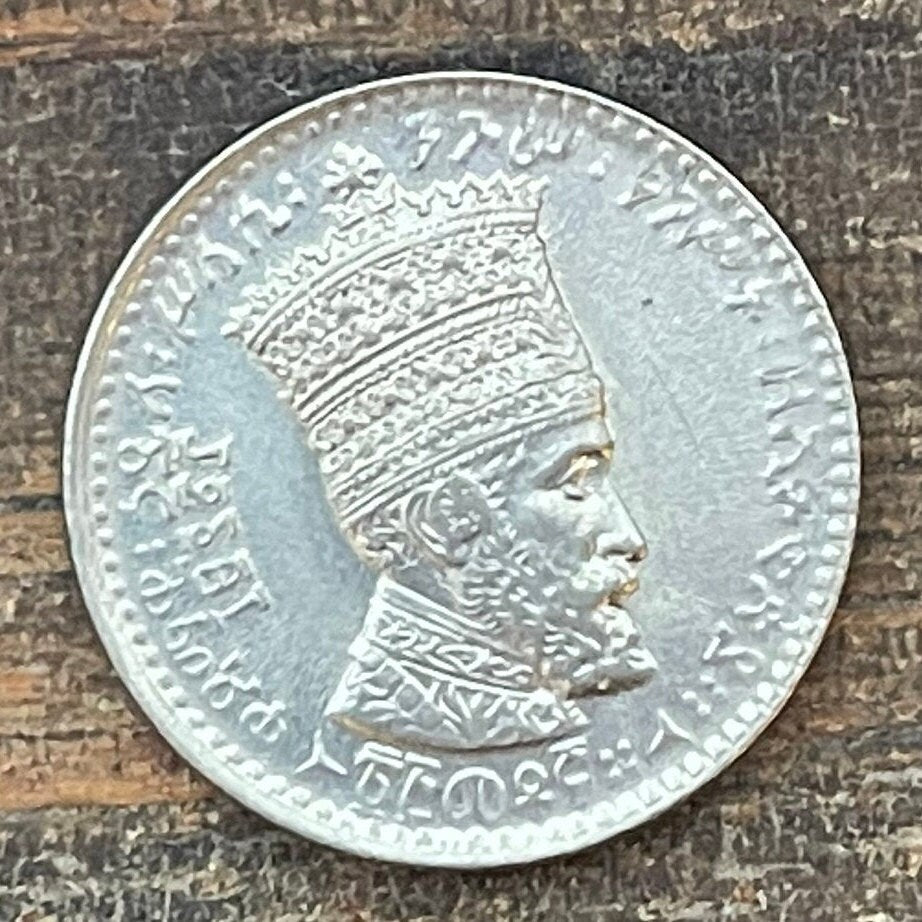
The coin is Awesome and Just as described. Thank you
It was really cool to get this! Always love history and this was really impressive!
Very cool coin, I was happy to find it. Great quality and shipping.
Excellent purchase. Love the item in great condition.










